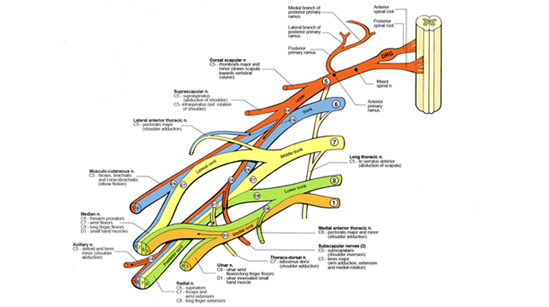|
Triangle Tilt FAQ
- Why is this surgery called the "Triangle Tilt"?
- What function will my child GAIN by having this surgery?
- What function will my child LOSE by having this surgery?
- What function will my child lose over time by NOT having this procedure?
- What kind of problems would occur over time if we decided not to have this recommended surgery done?
- What is the best age to have this surgery done for the most benefit and why? Is a child ever too young or an adult ever too old to have this surgery and why?
- Would more frequent and active therapy resolve the issues that necessitate this surgery?
Myofascial Release? Bracing or splinting? Electrical stimulation?
- Exactly what are you looking for when you evaluate a child for this? How does it present itself on a video? What tests does my child need to have done for the evaluation?
- How long does the surgery take? How long is the hospital stay?
- How is the child immobilized after the surgery and for how long?
- Are there any restrictions in the post-op phase?
- What are the restrictions for the year following the triangle tilt?
- What kind of therapy will we need to do following this surgery?
- Is there a chance my child can become worse after surgery?
- Does a triangle tilt ever have to repeated and if so, why?
- Will the triangle tilt affect the way my child's shoulder/arm looks?
- Will this surgery allow the scapula to move more freely?
- How do the bones heal together? Are there bony edges that may do harm to the rotator cuff with movement?
Why is this surgery called the "triangle tilt"? back to top
The triangle tilt is a surgery that addresses scapular elevation in children with OBPI through the bony realignment of the clavicle and scapula. This realignment, or tilting of the triangle formed by clavicle and scapula, can be best visualized from a bird-eye-view (above the patients head). An imaginary line forms the base of this triangle whose sides are the clavicle and the scapular spine (the upper lip of the scapula). As the scapula elevates, the plane of the triangle is steepened. The purpose of the triangle tilt, therefore, is to normalize the plane of this triangle or, in other words, to reduce the elevation of the scapula and normalize the spatial relationship between the sides of the triangle.
What function will my child gain by having this surgery? back to top
- supination is improved
- winging scapula is resolved
- elbow flaring is resolved, restoring arm length
- biceps function is improved (hand-to-mouth function)
- overall appearance of the limb is normalized
- shoulder anatomy is normalized (reduction in subluxation, etc.) with greater potential for growth/development
What function will my child lose by having this surgery? back to top
Internal rotation movements can be weakened (pledge of allegiance). There is also the potential for some weakness in overhead motion.
What function will my child lose over time by NOT having this surgery? back to top
See ‘What function will my child gain by having this surgery'. Most notably, growth and development of the arm will be hindered.
What kind of problems would occur over time if we decided not to have this recommended surgery done? back to top
Per Dr. Nath's experience, scoliosis cannot be significantly correlated to OBPI injury.
What is the best age to have this surgery done for the most benefit and why? Is a child ever too young or an adult ever too old to have this surgery and why? back to top
The surgery is recommended for children ages 2-12 with exceptions made according to the patient's development (weight, size, bone density, etc). Generally, after the age of 12 the scapula and clavicle are no longer soft and are therefore difficult to realign. (Bony edges are more problematic in older patients. High density bone does not fuse as congruously as its softer, younger precursor). Additionally, the increased weight of the limb after this age could hinder the healing process that is critical to the success of the surgery. In the case of a heavy limb, a screw or some other form of internal stabilization would be required to ensure that the triangle could be effectively stabilized. This, of course, is introducing another possible ‘edge problem' that could compromise range of motion and the integrity of the rotator cuff.
Would more frequent and active therapy resolve the issues that necessitate this surgery?
Myofascial Release? Bracing or splinting? Electrical stimulation? back to top
Dr. Nath has had many patients whose parents are therapists. Despite continuous therapy, scapular elevation is not resolved in these patients. Active therapy and electrical stimulation may be beneficial to the patient, but it is limited in scope for cases with exaggerated scapular elevation.
Exactly what are you looking for when you evaluate a child for this? How does it present itself on a video? What tests does my child need to have done for the evaluation? back to top
The average candidate for the triangle tilt presents with marked internal rotation of the arm and poor supination. A characteristic ‘elbow flaring' is seen with sloping of the shoulder. As a result, the arm commonly appears to be shorter in length.
How long does the surgery take? How long is the hospital stay? back to top
This surgery is a two-hour procedure. Patients stay for one night in the hospital to ensure proper splinting and positioning of the arm.
How is the child immobilized after the surgery and for how long? back to top
The child is splinted in a ‘gunslinger splint': it is a half-torso, rigid body splint that maintains the arm in a natural position directly at the side, elbow flexed at 90°, forearm turned outward 5° and fully supinated at 180°. The elbow and wrist are well padded to protect the ulnar nerve. The splint must be worn at al times and is not to be removed (even for bathing) for six weeks.
Are there any restrictions in the post-op phase? back to top
The splint is worn 24/7 for six weeks and should not be removed for any reason.
What are the restrictions for the year following the triangle tilt? back to top
Heavy weight-bearing exercises should be avoided, especially exercises that require shoulder stability (monkey bars, etc.)
What kind of therapy will we need to do following this surgery? back to top
During the six-week post-op phase, only passive range of motion for the wrist and fingers is done. During weeks 8-10, passive range of motion (PROM) and assisted active range of motion (AAROM) is done. Week 11+, therapy resumes. Light weight bearing resumes slowly and gradually increases over time as tolerated. Heavy weight-bearing exercises should be avoided for one-year post-op.
Is there a chance my child can become worse after surgery? back to top
There is always the potential for general and specific complications that are associated with surgery. The general risks of surgery should always be considered seriously. According to Dr. Nath's experience, there are no specific risks of this surgery that could cause the presenting symptoms to worsen.
Does a triangle tilt ever have to repeated and if so, why? back to top
No.
Will the triangle tilt affect the way my child's shoulder/arm looks?
back to top
The triangle tilt will normalize the length and position of the arm by resolving exaggerated internal rotation. Thus, secondary effects of internal rotation such as elbow flaring and sloping of the shoulder are normalized. Concomitant winging of the scapula is also improved by the triangle tilt.
Will this surgery allow the scapula to move more freely? back to top
The motion of the scapula can be reduced as a result of the triangle tilt. However, this reduction in motion does not manifest itself physiologically and does not account for any functional deficits.
How do the bones heal together? Are there bony edges that may do harm to the rotator cuff with movement? back to top
The bones heal together through a fusion-like process in which bony tunnels connect and stabilize the newly fractured fragments. Splinting of the arm allows this fusion to occur without interruption and is therefore critical to the success of the surgery. Bony edges are not of concern in children because 1) the sharp edges of the bone are surgically trimmed and 2) the soft character of the clavicle and scapula in children allows for a more rounded and successful fusion of the fragments. For this reason, adults are not suitable candidates for the triangle tilt procedure. |
















